One-Pot Moroccan Chickpea Stew
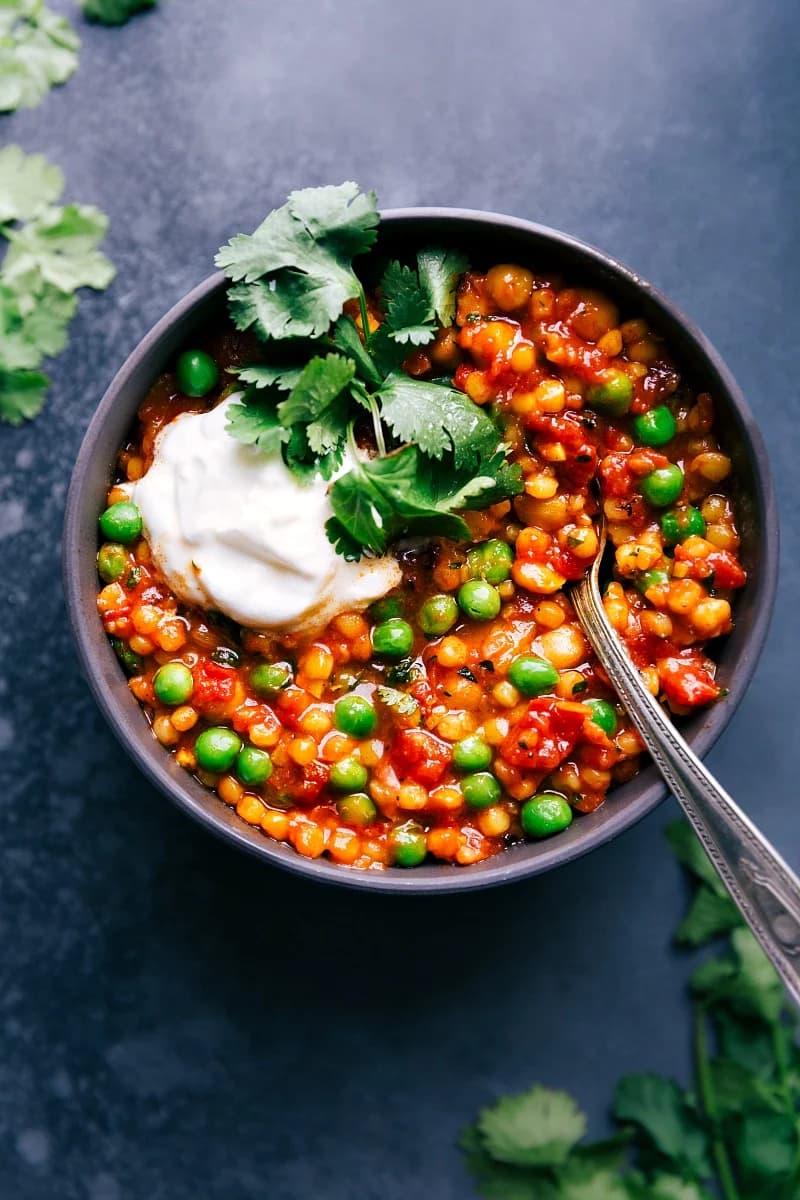
This one-pot wonder is about to become your new favorite way to impress people without actually breaking a sweat in the kitchen.

Picture this: warm Moroccan spices filling your kitchen with the kind of aroma that makes neighbors suddenly want to be your best friend.

The butternut squash gets perfectly tender while the chickpeas break down just enough to create a naturally creamy, hearty base that’ll make you forget all about boring weeknight dinners.
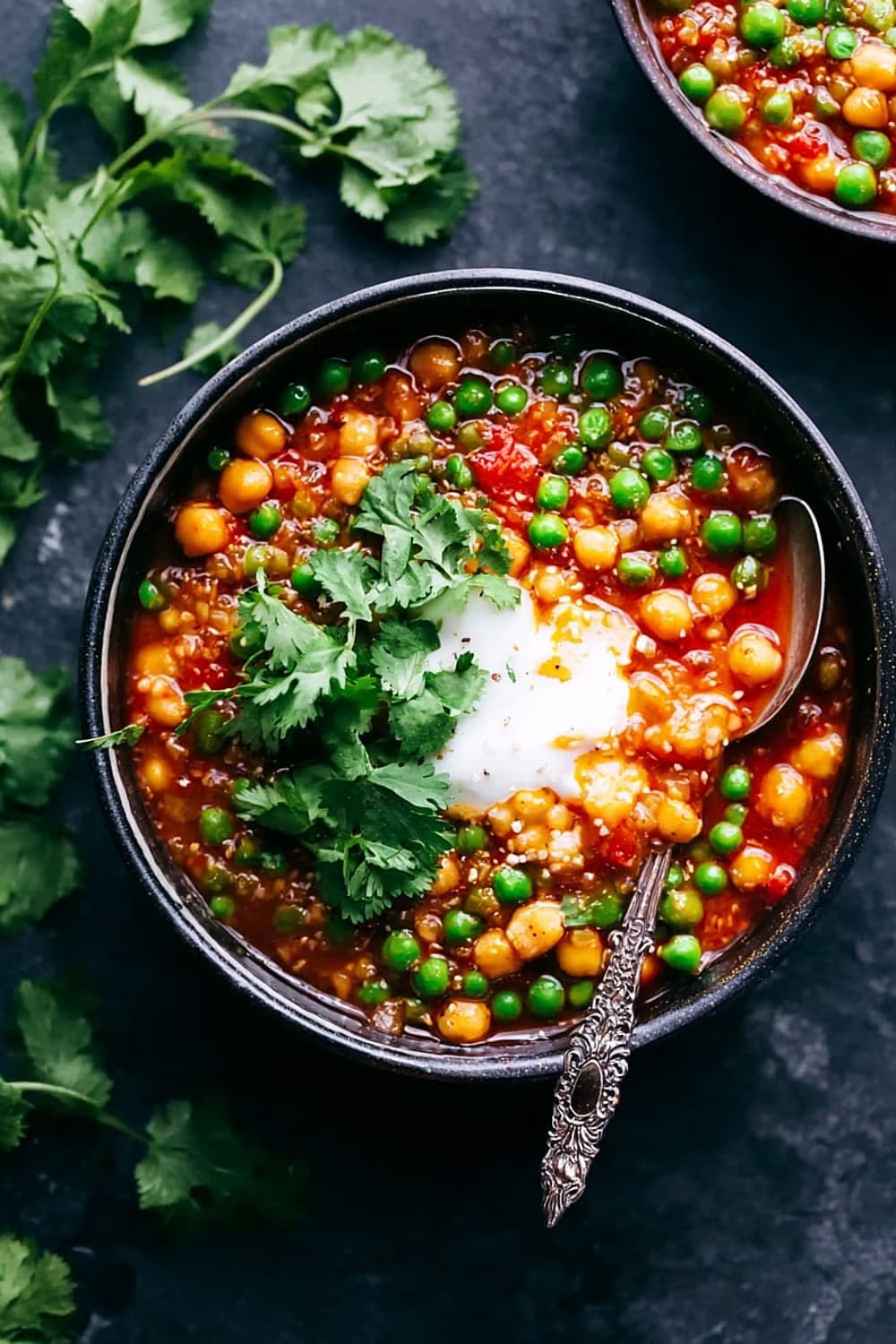
Israeli couscous adds these delightful little pearls of texture that soak up all those incredible flavors like tiny flavor sponges.
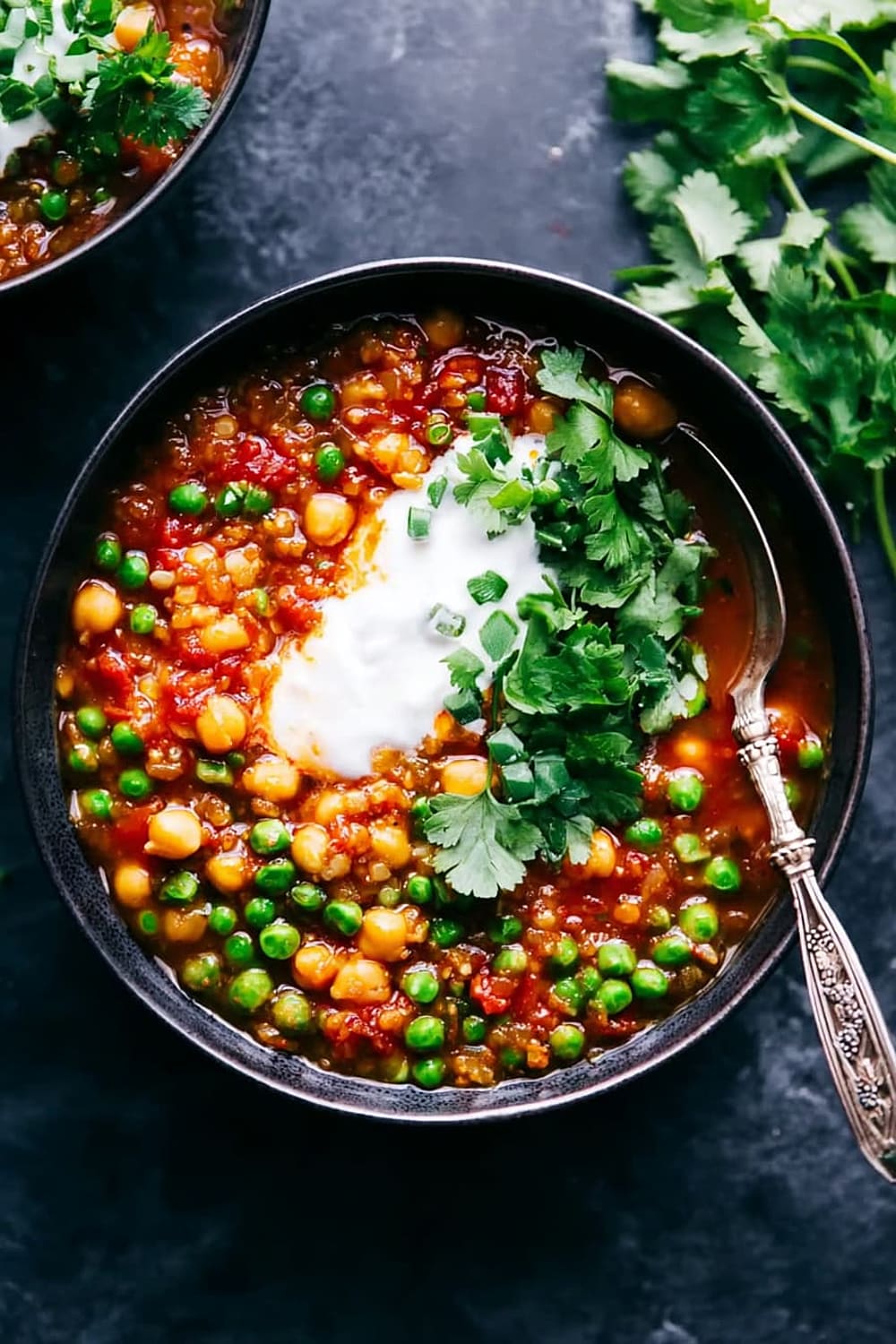
Plus, everything cooks in one pot, which means less cleanup and more time to bask in the glory of your culinary genius.

This is comfort food that happens to be healthy, filling, and fancy enough for company but easy enough for a Tuesday night when you’re wearing sweatpants and questioning your life choices.
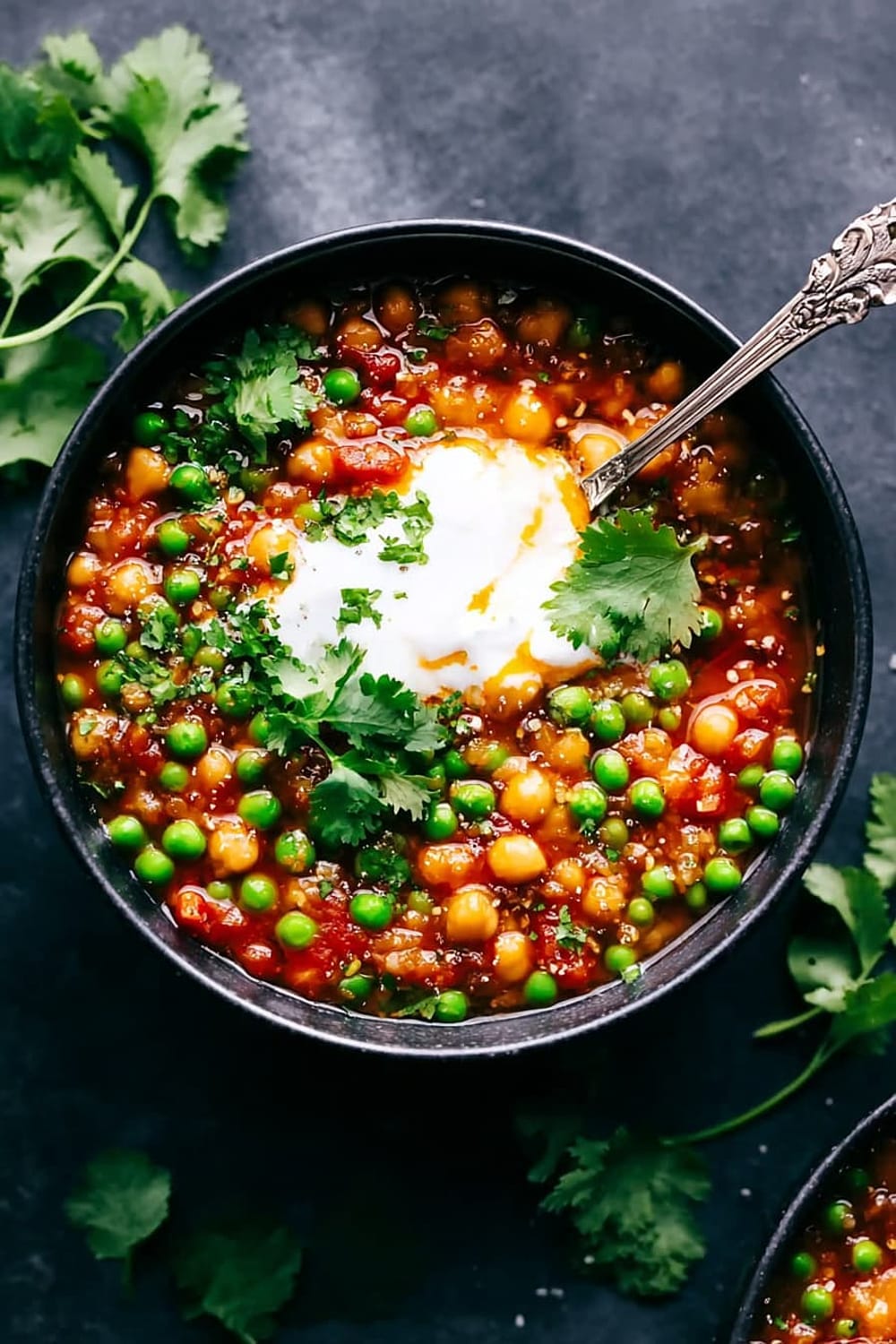
Ingredients
For the aromatic base
- 3 tablespoons coconut oil (measured when solid)
- 1 cup finely diced yellow onion
- 2 tablespoons finely minced garlic (5 to 6 cloves)
For the hearty stew
- 1 (15.5-ounce) can chickpeas (also called Garbanzos), drained and rinsed
- 4 cups butternut squash (1.3 pounds), peeled and cubed into 1/2-inch pieces
- 2 tablespoons tomato paste
- 2 (14.5-ounce) cans fire-roasted crushed tomatoes
- 2-1 /2 cups vegetable stock (I like Swanson’s)
- 1 cup Israeli couscous
For the spice blend
- 1 tablespoon ground cumin
- 1 tablespoon ground chili powder (use McCormick for less heat)
- 1 teaspoon ground turmeric
- 1 teaspoon garam masala
- 1 teaspoon salt
- 1 /8 teaspoon ground cinnamon
- 1 /8 teaspoon cayenne pepper (optional; leave out if you don’t want heat)
- 1 /4 teaspoon pepper
For the fresh finish
- 1 lemon
- 1 /2 cup fresh cilantro (loosely measured)
- 1 cup frozen sweet peas
- Optional toppings: Greek yogurt, fresh mint, basil, additional lemon wedges
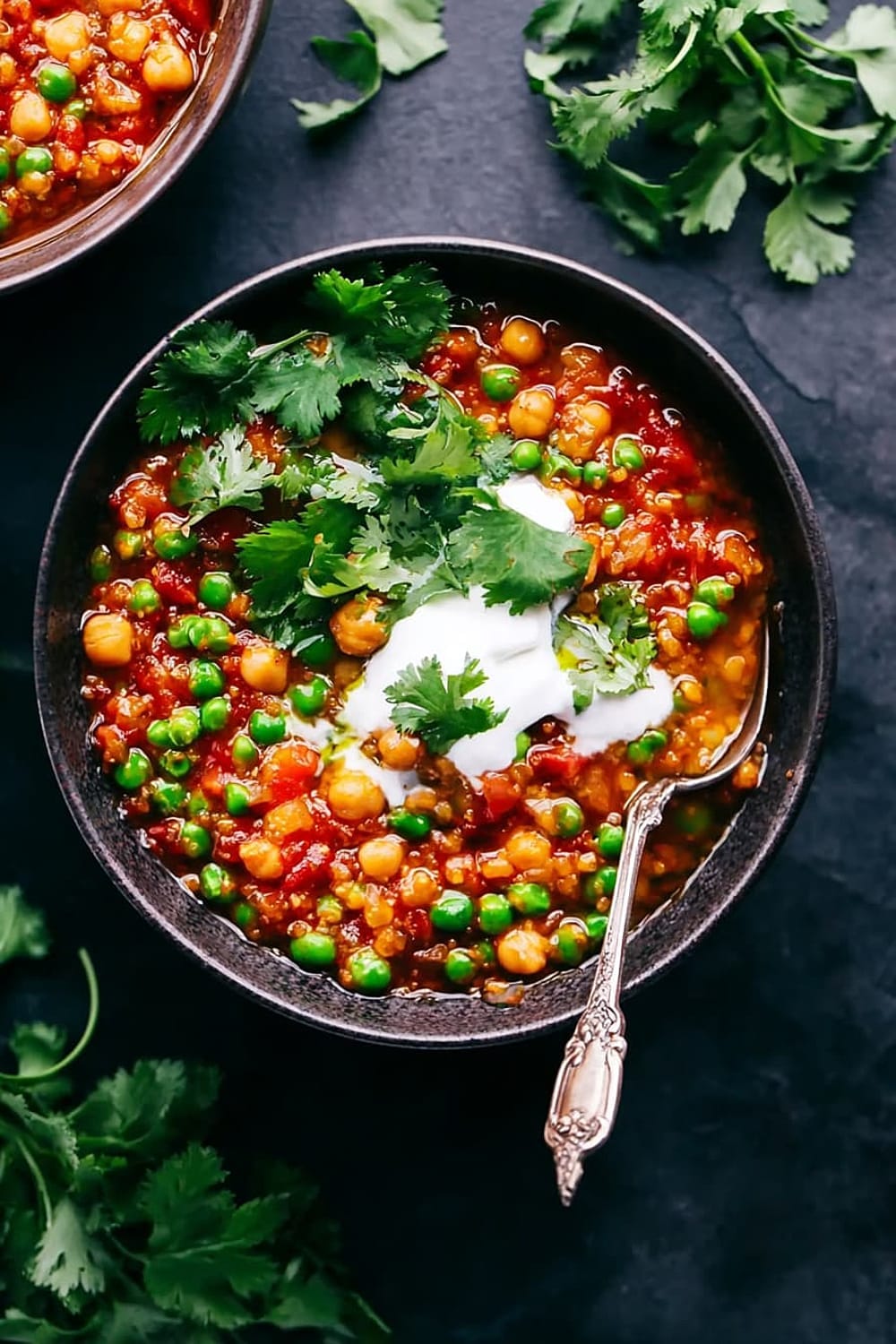
Instructions
Build the aromatic foundation
- 1 Heat the coconut oil in a large cast-iron pot over medium-high heat until melted and shimmering. A cast-iron pot holds heat better than nonstick, giving you more even cooking, though nonstick will work if that’s what you have (just expect slightly longer cook times). Add the finely diced onion and minced garlic, cooking for 5 minutes or until the onion becomes softened and translucent. You’ll know it’s ready when the mixture smells incredibly fragrant and the onion pieces look glossy.
- 2 Add the drained and rinsed chickpeas and cubed butternut squash to the pot. Cook over medium heat, stirring frequently with a wooden spoon, for 7-9 minutes or until the squash begins to soften around the edges. Here’s the secret technique: using the back of your wooden spoon, gently crush down some of the chickpeas to release their natural starch. This creates a naturally creamy texture and helps thicken the stew without any flour or cream.
Layer in the spice magic
- 3 Add the tomato paste, cumin, chili powder, turmeric, garam masala, salt, cinnamon, cayenne pepper (if using), and black pepper to the pot. Cook, stirring constantly, for 2 minutes until the spices become incredibly fragrant and the tomato paste darkens slightly. This blooming process is crucial – it transforms the raw spice powders into a deeply aromatic base that will infuse every bite of your stew.
- 4 Pour in both cans of undrained fire-roasted crushed tomatoes, stirring constantly for 1 minute. The fire-roasted variety adds a subtle smoky depth that regular crushed tomatoes just can’t match. You’ll hear some satisfying sizzling as the tomatoes hit the hot spice mixture.
Simmer to perfection
- 5 Add the vegetable stock and Israeli couscous to the pot, stirring to combine everything evenly. Bring the mixture to a rolling boil, then reduce heat to medium-low and cover. Simmer for 15-22 minutes, stirring every 3-4 minutes to prevent the couscous from sticking to the bottom. The stew is ready when the butternut squash is crisp-tender (it should still have some bite and not be mushy) and the Israeli couscous is cooked through and tender. If the couscous isn’t cooking properly or the squash seems tough, increase the heat slightly. If it’s boiling too vigorously, reduce the heat.
Add the finishing touches
- 6 Stir in the frozen sweet peas to warm through – they only need about 1 minute to heat completely. Add 1/2 teaspoon fresh lemon zest and 1-2 tablespoons fresh lemon juice, adding the juice gradually and tasting as you go since lemon preferences vary. Fold in the fresh cilantro. Taste and adjust seasoning with additional salt and pepper – I typically add another 1/4 teaspoon salt and 1/8 teaspoon pepper at this stage. Ladle the stew into bowls and serve with a dollop of Greek yogurt if desired.
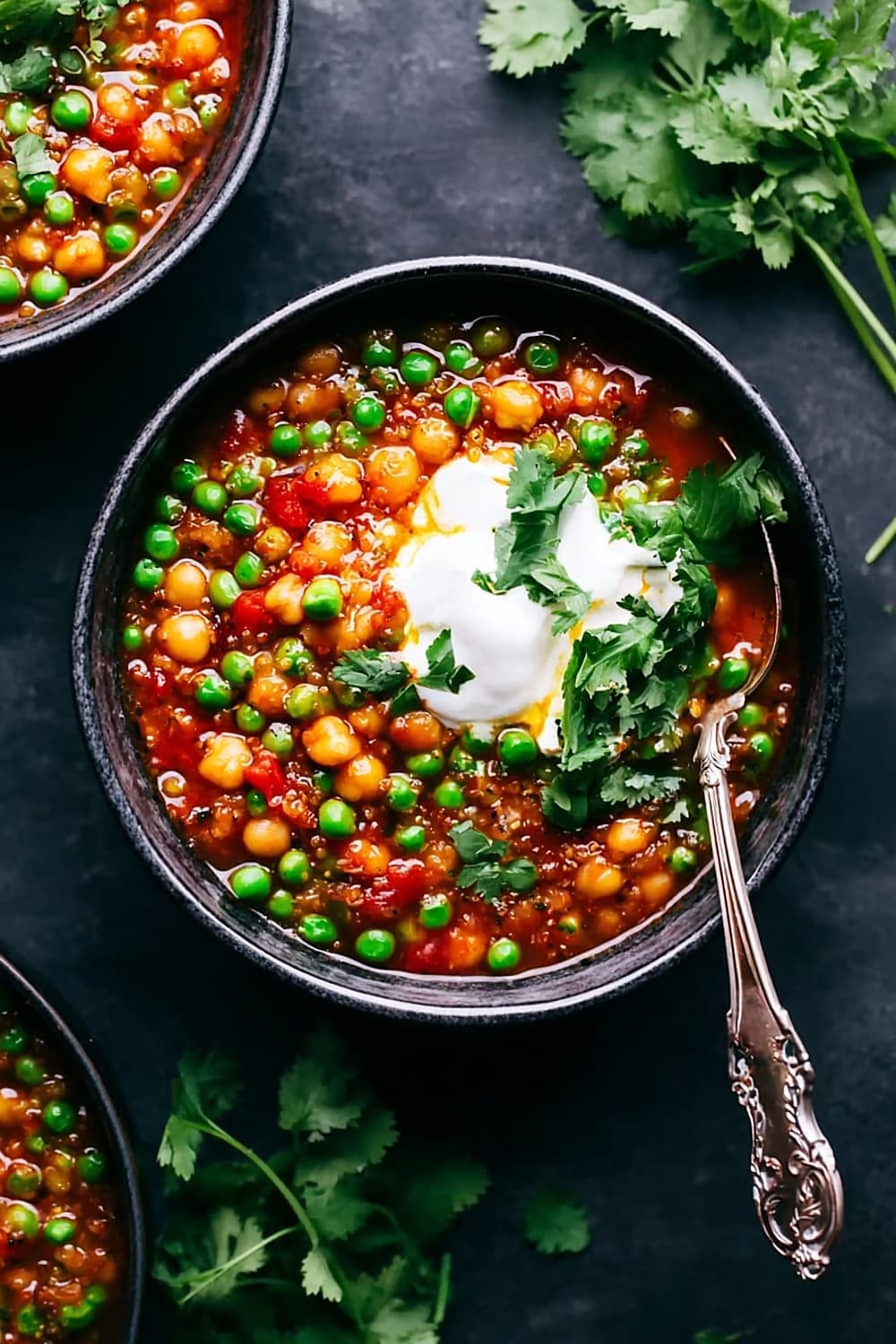
Recommended Equipment and Kitchen Tools
Essential for best results:
- Large cast-iron pot or Dutch oven – The heavy bottom distributes heat evenly and prevents scorching, which is crucial for the long simmering time. Cast iron also retains heat beautifully, keeping your stew warm longer
- Sharp chef’s knife – You’ll be doing quite a bit of chopping between the onion, garlic, and butternut squash, so a quality knife makes the prep work much faster and safer
- Cutting board with groove – The butternut squash can be juicy, and a grooved board catches any liquid while you work
- Wooden spoon – Perfect for stirring and crushing some of the chickpeas to create that creamy texture
Helpful upgrades:
- Microplane grater – Makes quick work of the fresh lemon zest and gives you perfectly fine, aromatic zest without any bitter white pith
- Immersion blender – If you prefer a partially pureed stew, you can blend about half the mixture right in the pot for an even creamier consistency
- Kitchen scale – For the most accurate measurement of the butternut squash, especially if you’re buying pre-cut pieces
Nice-to-have options:
- Bench scraper – Helps transfer all your chopped vegetables from cutting board to pot in one smooth motion
- Storage containers – This recipe makes great leftovers, so having quality airtight containers on hand is helpful for meal prep
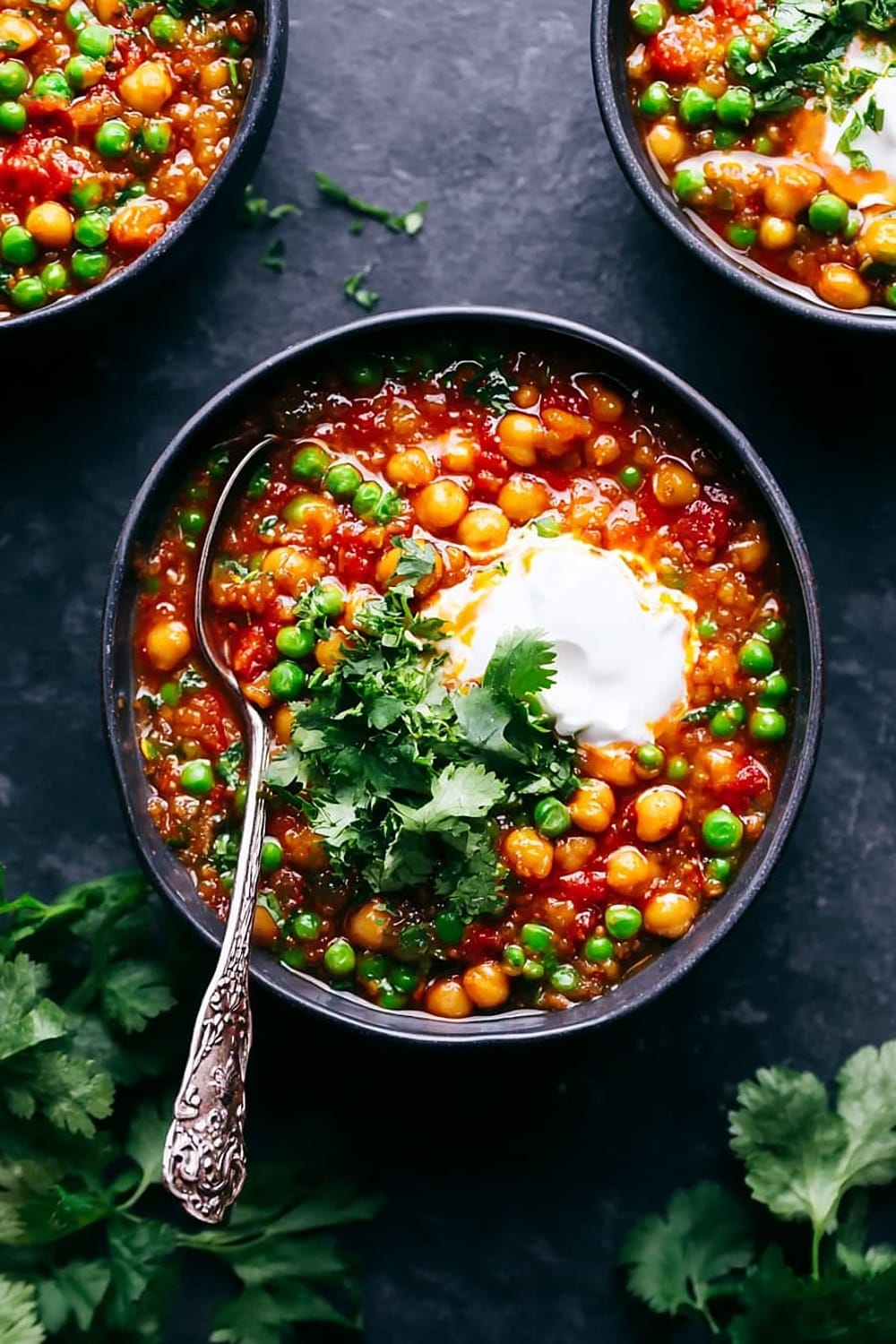
Recipe Variations and Dietary Modifications
Gluten-Free Adaptation:
- Replace the Israeli couscous with 1 cup quinoa or 3/4 cup brown rice – both will absorb the flavors beautifully while adding protein and fiber
- Cauliflower rice (2 cups) works wonderfully for a lower-carb option – add it in the last 5 minutes of cooking
- Gluten-free pasta like chickpea or lentil pasta creates a heartier, more pasta-like dish
Protein Boost Variations:
- Add 1 pound ground turkey or lamb after step 1, browning it before adding the chickpeas and squash
- Stir in 2 cups cooked chicken during the last 5 minutes of simmering
- Extra chickpeas – use two cans instead of one for a more protein-dense vegetarian meal
- White beans or cannellini beans can replace half the chickpeas for variety
Seasonal Vegetable Swaps:
- Sweet potatoes work perfectly in place of butternut squash – same cooking time and preparation
- Zucchini and yellow squash (added in the last 10 minutes) for a summer version
- Roasted eggplant adds a Mediterranean twist – cube and roast separately, then fold in at the end
- Spinach or kale (2-3 cups) stirred in during the last 2 minutes for extra greens
Spice Level Modifications:
- Mild version: Omit cayenne and use sweet paprika instead of chili powder
- Extra spicy: Add 1/2 teaspoon harissa paste with the tomato paste, or include 1 diced jalapeño with the onions
- Warming spices: Add 1/4 teaspoon ground ginger and 1/8 teaspoon ground cloves for a more complex spice profile
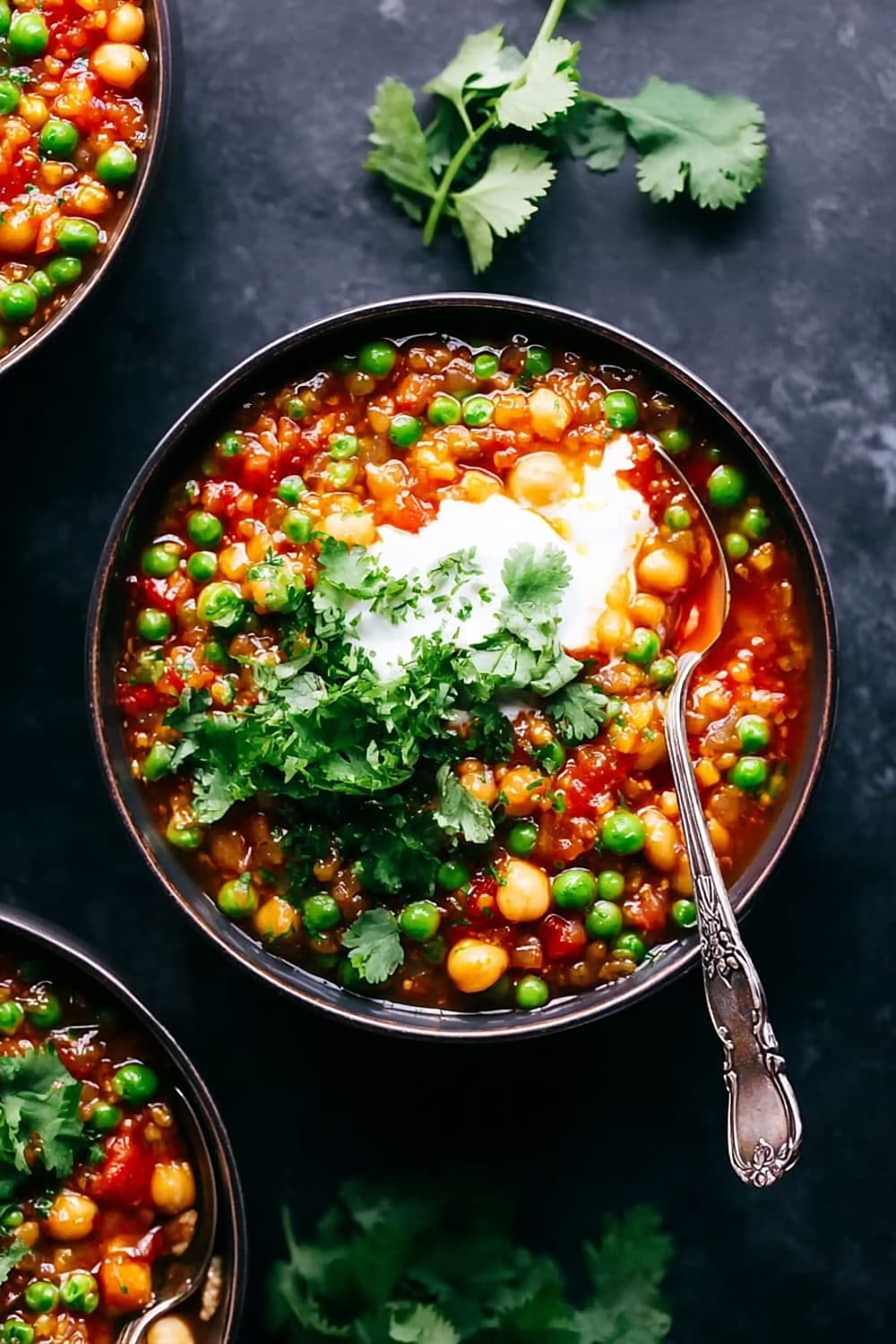
Nutritional Information and Health Benefits
Key Nutritional Highlights:
This hearty stew delivers approximately 320 calories per serving while packing serious nutritional punch. Each bowl provides about 12 grams of plant-based protein from the chickpeas and couscous, 8 grams of fiber for digestive health, and complex carbohydrates that provide sustained energy without blood sugar spikes. The butternut squash contributes natural sweetness while keeping the overall dish relatively low in calories but high in volume and satisfaction.
Health Benefits of Star Ingredients:
Chickpeas are nutritional powerhouses, loaded with folate, iron, and magnesium. They’re also rich in resistant starch, which feeds beneficial gut bacteria and helps regulate blood sugar. The butternut squash provides an impressive amount of beta-carotene (converted to vitamin A in your body), supporting eye health and immune function. Turmeric contains curcumin, a potent anti-inflammatory compound that may help reduce chronic inflammation. The fire-roasted tomatoes are rich in lycopene, an antioxidant that becomes more bioavailable when tomatoes are cooked, potentially supporting heart health and cancer prevention.
Dietary Considerations:
This recipe is naturally vegetarian, dairy-free, and can easily be made vegan. It’s high in fiber and plant-based protein, making it suitable for those following Mediterranean, plant-forward, or anti-inflammatory eating patterns. The combination of complex carbs, fiber, and protein creates a satisfying meal that helps maintain stable blood sugar levels. One serving provides about 25% of your daily fiber needs and significant amounts of vitamin A, vitamin C, and folate.
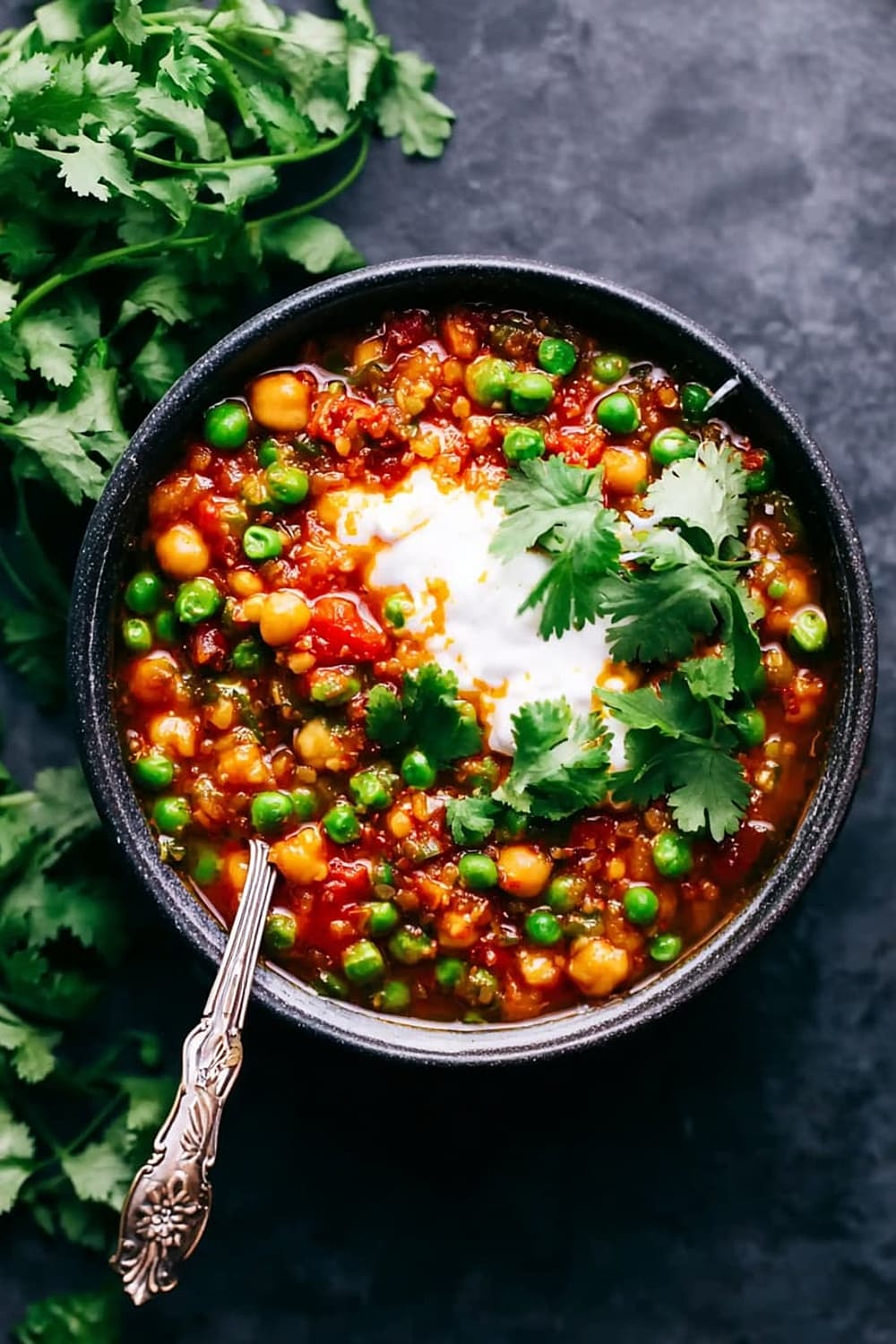
Smart Swaps and Ingredient Substitutions
Common Substitutions:
- Coconut oil → Olive oil or avocado oil (same amount) – olive oil adds Mediterranean flavor while avocado oil has a higher smoke point
- Israeli couscous → Orzo pasta, pearl barley, or farro (same cooking time) – each adds different textures and nutritional profiles
- Butternut squash → Sweet potatoes, acorn squash, or delicata squash (same prep and cooking time)
- Fire-roasted tomatoes → Regular crushed tomatoes plus 1/2 teaspoon smoked paprika for that smoky depth
- Fresh cilantro → Fresh parsley, mint, or basil depending on your flavor preference
Budget-Friendly Swaps:
- Vegetable stock → Water plus 2 vegetable bouillon cubes or 1 tablespoon better-than-bouillon paste
- Individual spices → 2 tablespoons Moroccan spice blend or ras el hanout if you have it on hand
- Canned chickpeas → 1.5 cups cooked dried chickpeas (much more economical if you cook beans regularly)
- Fresh lemon → 2 tablespoons bottled lemon juice though fresh is definitely preferred for brightness
Pantry Emergency Substitutions:
- Garam masala → Equal parts cinnamon, cumin, and coriander if you don’t have the blend
- Fresh garlic → 2 teaspoons garlic powder (add with the other spices, not at the beginning)
- Frozen peas → Frozen corn, diced bell peppers, or chopped green beans for color and texture
- Greek yogurt topping → Sour cream, cashew cream, or even a drizzle of tahini for richness
Pro Tips for Substitutions:
- When using dried herbs instead of fresh, use about 1/3 the amount and add them with the spices rather than at the end
- Grain substitutions may require different liquid ratios – start with less stock and add more as needed
- Root vegetable swaps should be cut to similar 1/2-inch pieces to ensure even cooking

Make It Diabetes-Friendly
Carbohydrate Modifications:
- Replace Israeli couscous with 1/2 cup cauliflower rice (reduces carbs by about 35 grams per serving)
- Use only 1/2 cup couscous and add extra chickpeas to maintain heartiness while cutting carbs
- Substitute with shirataki rice or konjac noodles for an ultra-low-carb version
- Add extra vegetables like diced zucchini, bell peppers, or mushrooms to increase volume without significantly increasing carbs
Portion & Blood Sugar Management:
- Recommended serving size: 1.5 cups with estimated 28 grams net carbs (original recipe)
- Modified version with cauliflower rice: approximately 15 grams net carbs per serving
- Pair with protein: Add 2-3 oz grilled chicken or a hard-boiled egg to further slow carb absorption
- Healthy fats: The Greek yogurt topping adds protein and fat to help stabilize blood sugar response
Timing and Preparation Tips:
- Eat with fiber-rich foods – the high fiber content from chickpeas and vegetables naturally helps moderate blood sugar spikes
- Make it a complete meal by serving over spiralized zucchini or spaghetti squash instead of with bread
- Portion control strategy: Use this as a side dish (1 cup serving) alongside lean protein and non-starchy vegetables
- Meal prep friendly: Divide into portion-controlled containers with measured servings for easy diabetes management
Total Carb Reduction Potential: Modified version can reduce net carbs from 28g to 15g per serving while maintaining the satisfying, flavorful experience.
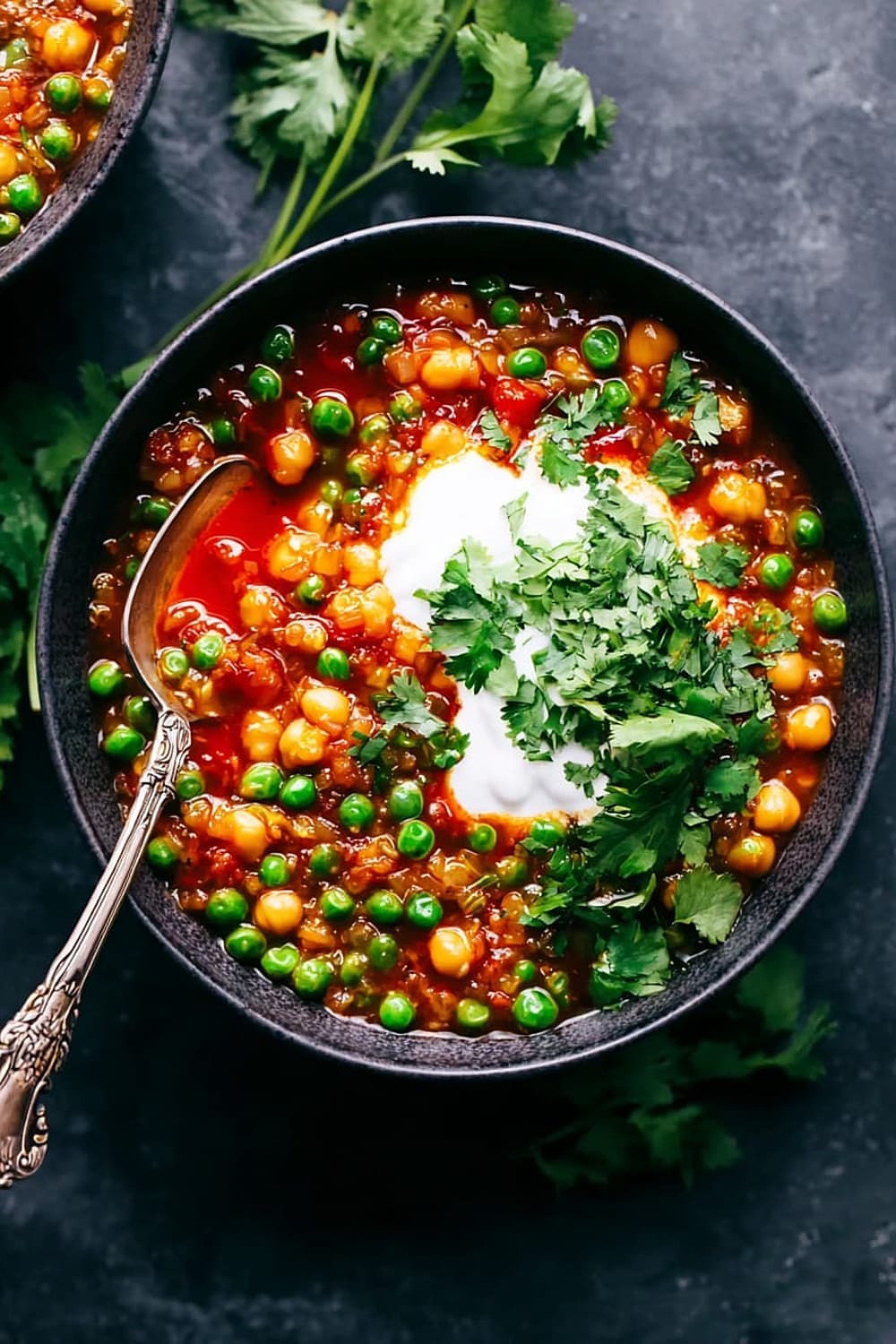
Perfect Pairing Suggestions
Beverage Pairings:
A medium-bodied red wine like Côtes du Rhône or Grenache complements the warm spices beautifully without overwhelming the delicate butternut squash. For white wine lovers, try a rich Viognier or oaked Chardonnay that can stand up to the bold Moroccan flavors. Beer enthusiasts should reach for a Belgian witbier or wheat beer – the citrus notes play perfectly with the lemon finish. Non-alcoholic options include spiced chai tea, pomegranate juice with sparkling water, or fresh mint tea to echo the Middle Eastern flavor profile.
Side Dish Recommendations:
Warm naan or pita bread is perfect for soaking up every drop of the flavorful broth. Cucumber yogurt salad with fresh dill provides a cooling contrast to the warm spices. Roasted Brussels sprouts with pomegranate seeds adds textural interest and seasonal flair. Simple arugula salad with lemon vinaigrette cuts through the richness while adding peppery freshness. Roasted carrots with harissa doubles down on the North African theme while providing sweet, caramelized contrast.
Complete Meal Ideas:
Start with hummus and olives as an appetizer to set the Mediterranean mood. Follow the stew with baklava or date cookies for dessert, keeping the Middle Eastern theme consistent. For casual entertaining, serve this family-style with various toppings like crumbled feta, toasted pine nuts, and fresh herbs so guests can customize their bowls. Grain bowl style: serve over quinoa or brown rice with roasted vegetables for a complete, balanced meal.
Occasion Suggestions:
This stew is perfect for cozy fall dinner parties, Meatless Monday meals, or meal prep sessions. It’s elegant enough for entertaining but comfortable enough for weeknight family dinners. The one-pot nature makes it ideal for camping trips or potluck gatherings where cleanup needs to be minimal.
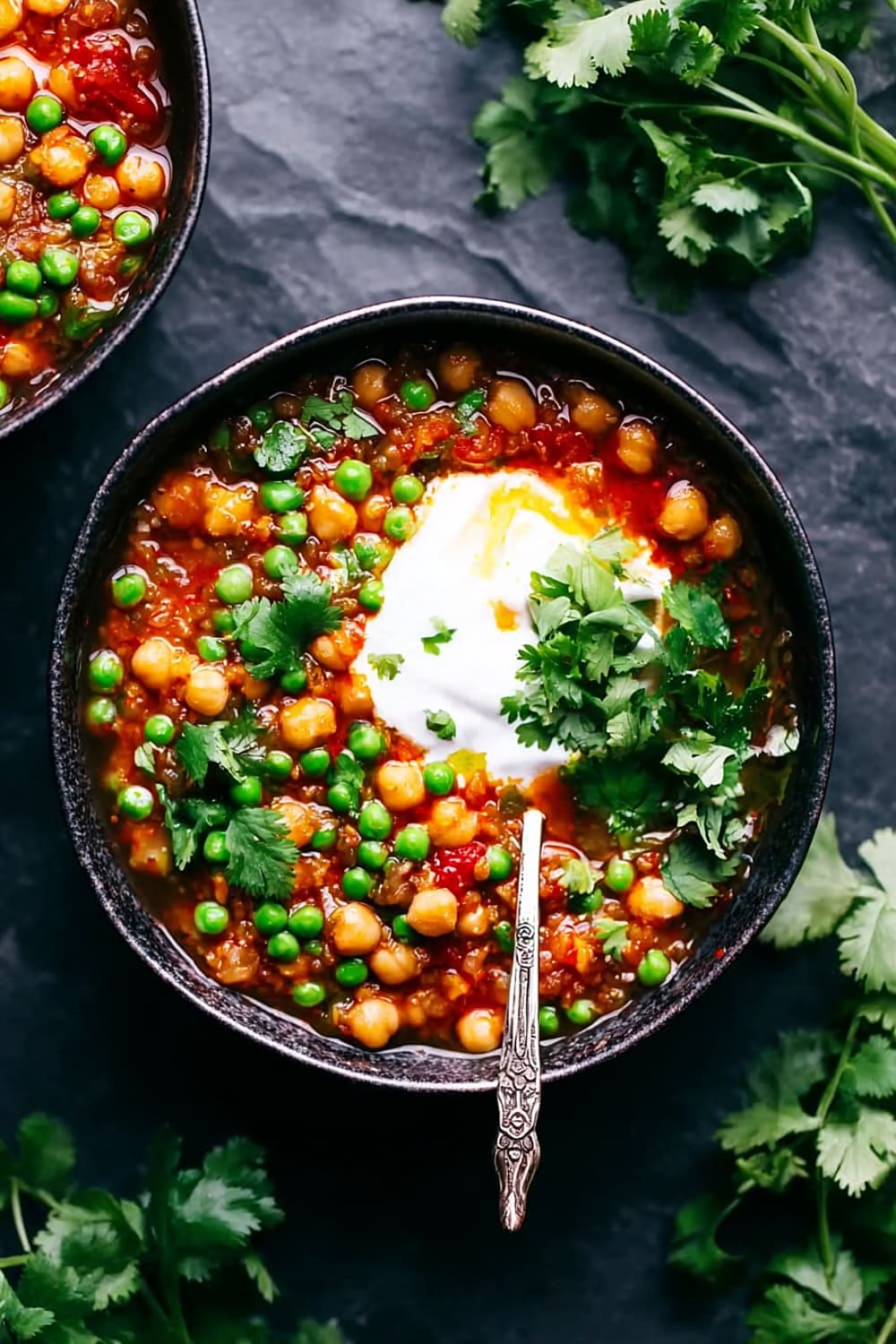
Pro Tips and Troubleshooting
Professional Techniques:
Toast your whole spices before grinding them if you have whole cumin and coriander – this adds incredible depth to the flavor profile. Layer your seasoning by adding salt at multiple stages rather than all at once; this builds more complex flavors. Don’t skip the chickpea-crushing step – this is what creates the naturally creamy texture without any dairy. Taste and adjust the lemon juice gradually; different lemons have varying acidity levels, and you want brightness without overwhelming sourness.
Common Mistakes and Solutions:
Mushy butternut squash happens when pieces are cut too large or cooked too long – stick to 1/2-inch cubes and test for doneness at the 15-minute mark. Bland flavor usually means the spices weren’t bloomed properly or you need more salt – always cook spices until fragrant before adding liquid. Couscous sticking to the bottom occurs when heat is too high or stirring is insufficient – maintain medium-low heat and stir every 3-4 minutes religiously. Watery consistency can be fixed by simmering uncovered for the last 5 minutes to reduce excess liquid.
Storage and Make-Ahead Strategies:
This stew actually improves overnight as flavors meld together. Store in the refrigerator for up to 4 days or freeze for up to 3 months. When reheating, add a splash of vegetable broth to restore the proper consistency. For meal prep, store the stew and toppings separately to maintain optimal textures. Make-ahead tip: Prepare through step 4, then refrigerate overnight and finish cooking the next day for even deeper flavors.
Scaling and Presentation:
This recipe doubles beautifully for crowd feeding – just use a larger pot and increase cooking time by 5-10 minutes. For elegant presentation, serve in shallow bowls with toppings arranged artfully on top and a drizzle of good olive oil. Garnish with pomegranate seeds during winter months for beautiful color contrast and sweet-tart flavor pops.
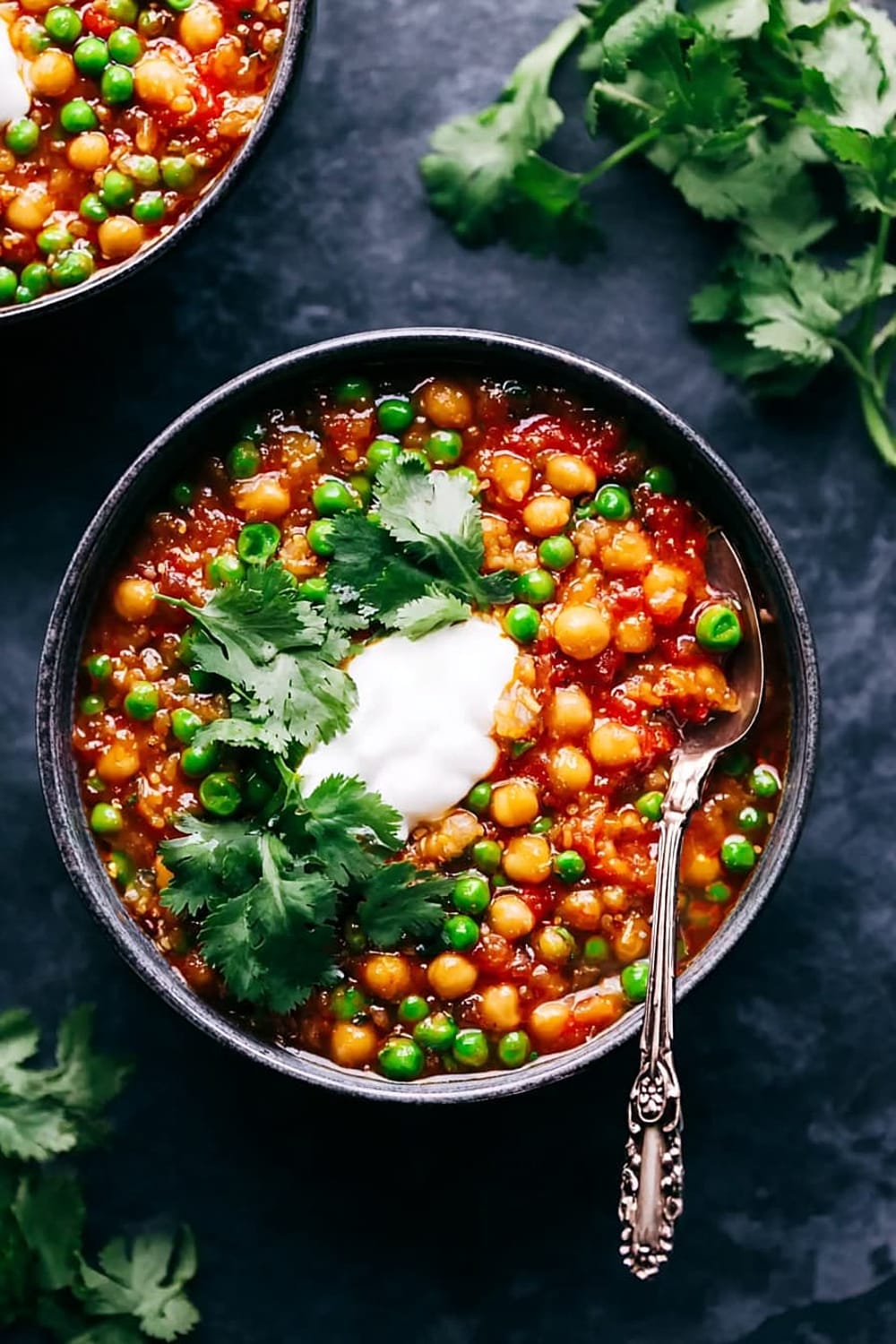
This one-pot Moroccan chickpea stew proves that healthy, satisfying meals don’t have to be complicated or time-consuming. With its perfect balance of warming spices, hearty vegetables, and protein-rich chickpeas, it’s the kind of recipe that makes you feel like a culinary genius while actually being incredibly forgiving and adaptable. Whether you’re cooking for a crowd, meal prepping for the week, or just wanting something comforting on a chilly evening, this stew delivers every single time with minimal cleanup and maximum flavor impact.